Set Review ➟ 21305 The Maze
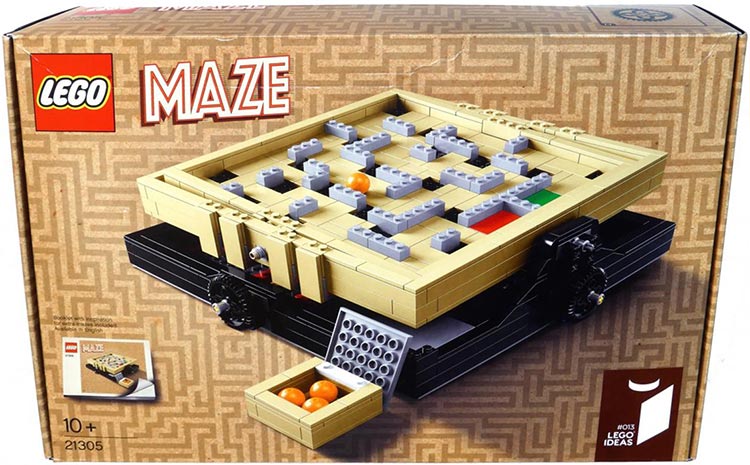
Without a doubt, the old-school mechanical mazes, where one had to carefully navigate a ball through a treacherous path, were among the most common items on the children’s Christmas wishlists for decades. While nowadays less common in their original wooden form, thanks to the LEGO Ideas programme they have recently been reincarnated as a new LEGO set.
If you are familiar with the originals, the similarity of their LEGO counterpart has surely not escaped you. The colours, the layout, the wheel controls at the sides, and even the rotating mechanism are precisely reconstructed, and offer the very same functionality.
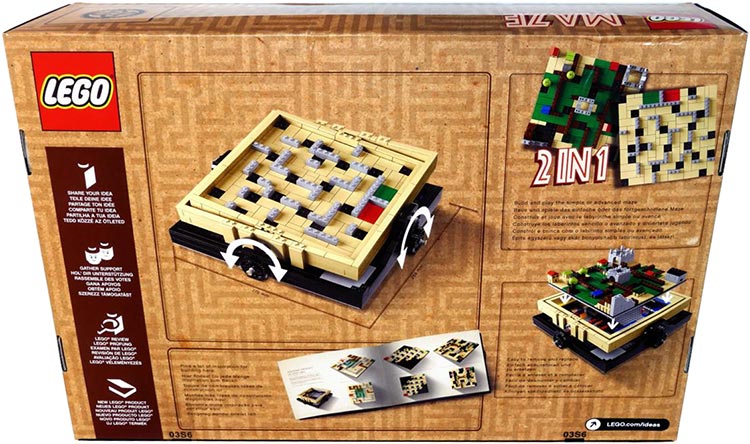
Maze architecture
Contrary to the bitter experience of Daedalus, building this maze is very enjoyable and simple. The entire model rests on a standard 32x32 baseplate, upon which two tilting mechanisms and a cradle are built. These mechanisms rely on a bit of Technic, and employ two tricks to make building them less prone to errors: they use varying colours at different sides (not visible once the model is completed), and there are many auxiliary internal parts that serve as guidelines for accurate spacing and positioning. LEGO actually went to great lengths to minimize any chances of confusing sides or gaps between the internal mechanisms.
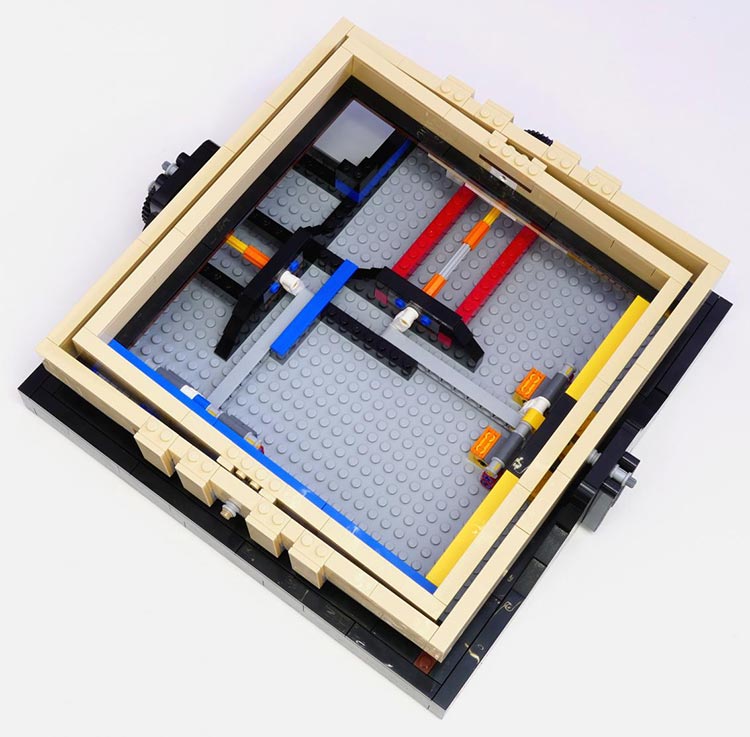
The set includes parts for two maps or “levels”, though they share some parts and therefore cannot be built at the same time—at least not using the supplied parts. One is a reconstruction of the old wooden mazes, while the other represents a small, cute fantasy setting in microscale including a little fort the ball rolls through on its way, as well as a tiny castle and a mill. They are 24x24 studs in size and rest snugly in the cradle.
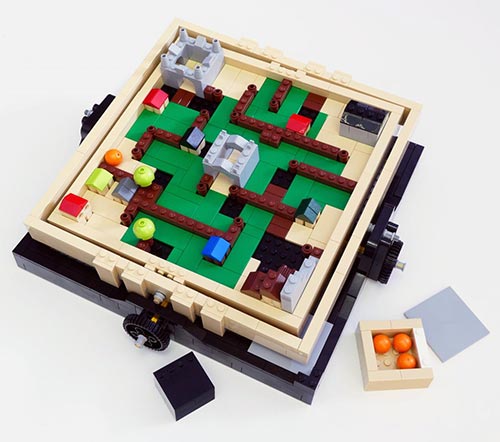
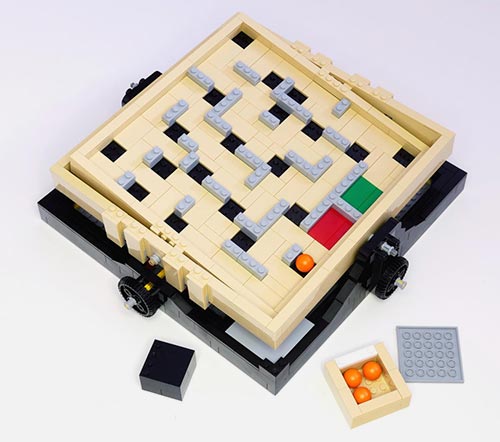
There is no ball return mechanism, hence the traps for the ball are not really holes, but just areas exposing the studded plates underneath. However, they serve their purpose as they trap the ball anyway.
Apart from the maze itself, this set includes a small box for four supplied balls. It can be stowed into the side of the maze in a small cradle, and along with an additional little black cube, also serves as a blocker to prevent the maze from tilting during transport.
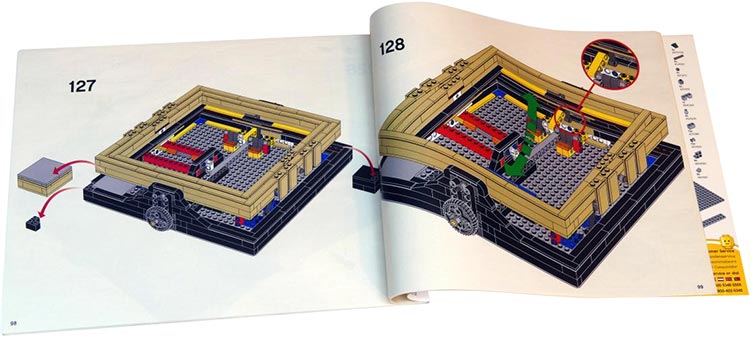
So, let’s play!
Once the last brick is in place, one can hardly wait to place one of the balls in the starting position and give the game a try. And let us say right away that, just like the wooden originals, this game is far from easy. It requires some coordination, thoughtful planning, and most of all—plenty of patience; attempting to scramble through the narrow passages and over the tiny bridges will invariably end in the ball being trapped.
Of course, the supplied parts suffice for a practically infinite number of custom levels, while combining them with one’s existing collection expands the possibilities even further. Therefore one can build own levels, which is precisely the point—we will not be surprised should the community spawn hundreds of interesting imaginative new level ideas in the future.
Fortunately, the designer of this set has avoided the pitfall of using the Technic gears for the tilting mechanism, because the minute backlashes between their teeth would probably make accurate movements nearly impossible. It relies on liftarms and ball-links instead, which offer adequate precision.
Nevertheless, not all is perfect. Before building the set, we were suspecting the creases between the level tiles may interfere with very precise movements. It turned out that they actually do not cause any troubles whatsoever, but there was another difficulty. Namely, the balls (part 72824) have two small yet existing moulding dents. For usual playing or Great Ball Contraptions these dents are too small to be significant, but here, if one is adjusting angles very slowly and accurately as it is often required, it is not uncommon for these dents to change the direction of the ball. Or worse, if the ball comes to rest on one of its dents, it is sometimes impossible to dislodge it even under full tilt - then the only “legal” way further is to shake the entire level and risk it storming around. A well-polished metal ball, though unconventional for LEGO, would have made the precise playing much more reliable.
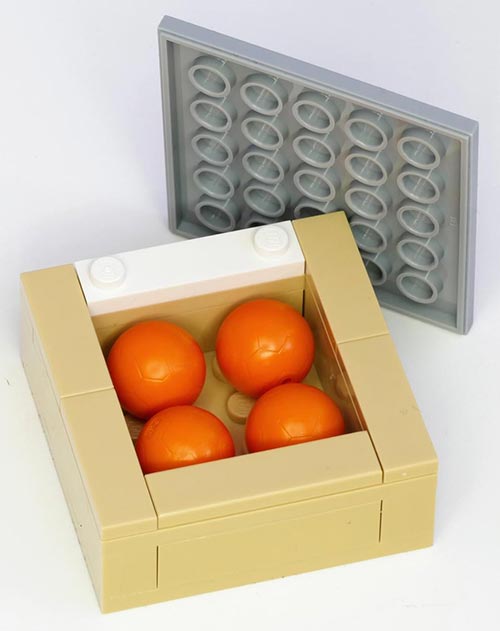
The only other slight criticism is aimed at the control wheels. They are, in fact, double-bevelled Technic gears with 36 teeth. While undeniably common and usable, these gears are not particularly comfortable to hold for a while. Though slightly more expensive, proper wheels with tyres, such as 44293c01, for example, might have been a better idea.
Raw materials
From the viewpoint of supplies, The Maze consists of 769 parts—it offers no particularly unusual or exotic parts, but in return comes up with plenty of generally useful building material. Most of it is in black and tan colour, with an amount of brown as well. There is a fine amount of standard one stud-wide bricks, of course plenty of 4x2 tiles both in tan and green, and a grey baseplate is a nice addition too. Although the 9-stud long axles are very common, its rare yellow variant, of which four are present in here, may be attractive for advanced Technic builders. The total weight of the model along with the boxes is slightly under a kilogram: 986 grams, to be exact.
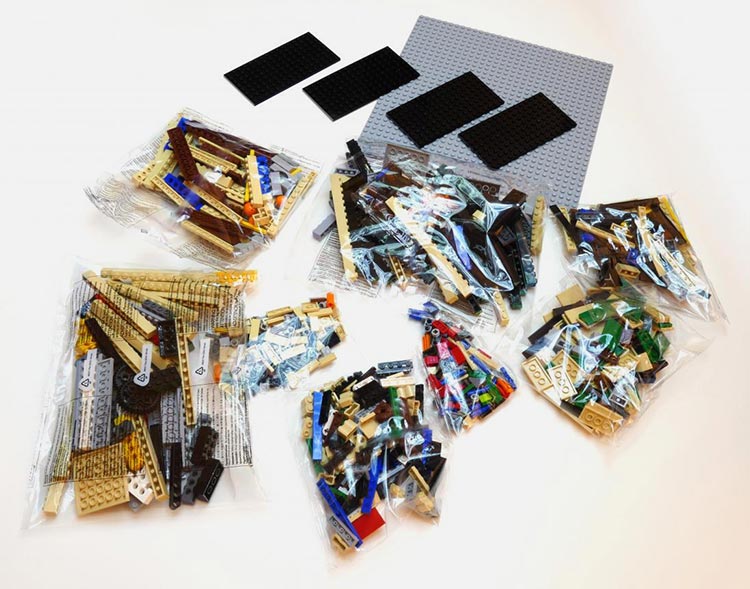
The large instruction booklet is typically clear and generous at 140 pages, and apart from the instruction for the mechanism and the aforementioned two levels, it includes an interesting introduction about the designer and the original maze game, as well as three photos of custom levels for inspiration.
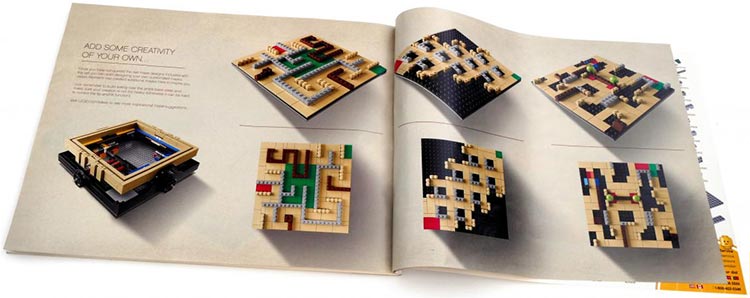
To sum up
Altogether, our impressions of The Maze firmly lean towards the positive. It is certainly something completely different and a refreshing occasional departure from the more standardized theme sets. Easy to build, fun to play with and endlessly customizable, it is an attractive set for many a LEGO fan, and even after being disassembled it brings a substantial amount of universally useful parts.
True, we cannot overlook that the playability of the supplied ball should have been better. A more even, rounded ball would have made the gameplay much easier. But this is a relatively minor.
Disclaimer: We’d like to thank LEGO for providing an early access copy of this set so we could post a review. All opinions in this review are our own and are neither supported nor endorsed by LEGO
2217